Moka pots

-
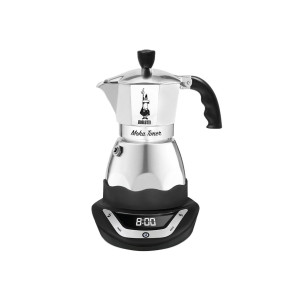 5.0Rated 5.00 out of 5(3)
5.0Rated 5.00 out of 5(3)Electric moka pot Bialetti Moka Timer 6 cups
£100.99 -22%£129.90 -
 5.0Rated 5.00 out of 5(3)
5.0Rated 5.00 out of 5(3)Moka pot Bialetti Moka Induction Black 6 cups
£49.90 -17%£59.90 -
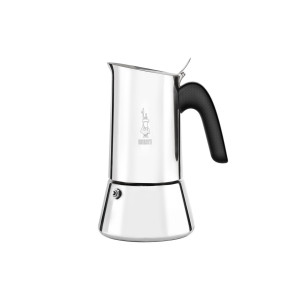 5.0Rated 5.00 out of 5(1)
5.0Rated 5.00 out of 5(1)Moka pot Bialetti Venus 6 cups
£30.09 -40%£49.90 -
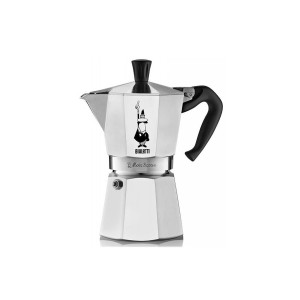 5.0Rated 5.00 out of 5(1)
5.0Rated 5.00 out of 5(1)Moka pot Bialetti Moka Express 6-cup Silver
£31.09 -28%£42.90 -
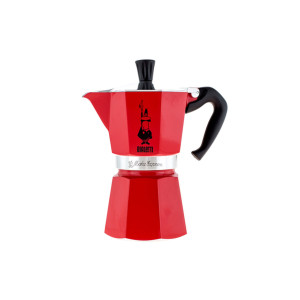 5.0Rated 5.00 out of 5(1)
5.0Rated 5.00 out of 5(1)Moka pot Bialetti Moka Express Red 6 cups
£34.32 -20%£42.90 -
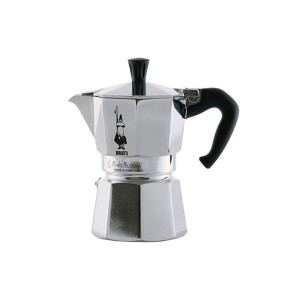 5.0Rated 5.00 out of 5(1)
5.0Rated 5.00 out of 5(1)Moka pot Bialetti Moka Express 3-cup Silver
£24.72 -20%£30.90 -
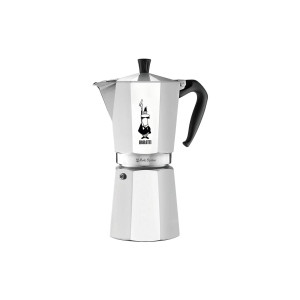 5.0Rated 5.00 out of 5(1)
5.0Rated 5.00 out of 5(1)Moka pot Bialetti Moka Express 12-cup
£52.90 -24%£69.90 -
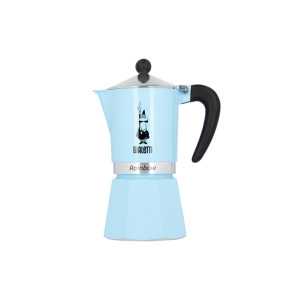
Moka pot Bialetti Moka Rainbow 6 cups Blue
£35.90 -28%£49.90 -
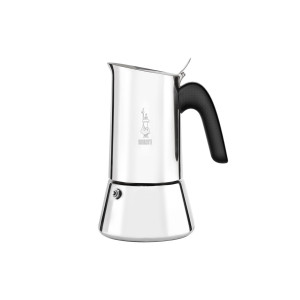 5.0Rated 5.00 out of 5(1)
5.0Rated 5.00 out of 5(1)Moka pot Bialetti Venus 4 cups
£36.72 -20%£45.90 -
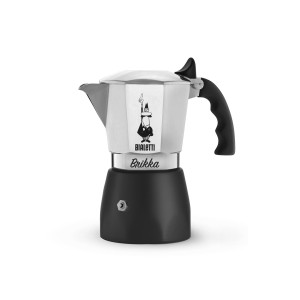 5.0Rated 5.00 out of 5(4)
5.0Rated 5.00 out of 5(4)Moka pot Bialetti Brikka 4 cups
£41.69 -48%£79.90 -
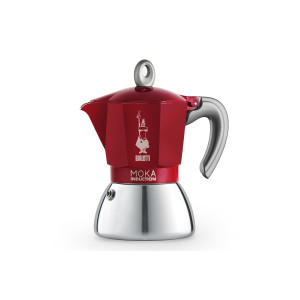 5.0Rated 5.00 out of 5(2)
5.0Rated 5.00 out of 5(2)Moka pot Bialetti Moka Induction Red 6 cups
£44.90 -22%£57.90 -
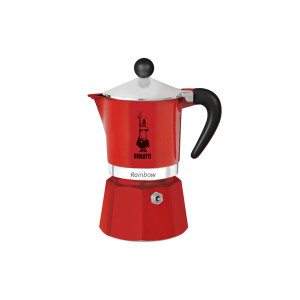
Moka pot Bialetti Moka Rainbow 3-cup Red
£23.12 -20%£28.90 -
 5.0Rated 5.00 out of 5(1)
5.0Rated 5.00 out of 5(1)Moka pot Bialetti Mini Express Red
£32.72 -20%£40.90 -
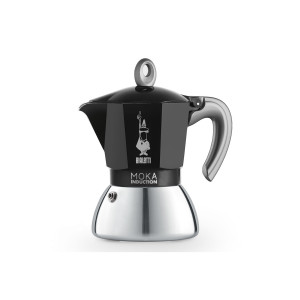 4.5Rated 4.50 out of 5(2)
4.5Rated 4.50 out of 5(2)Moka pot Bialetti Moka Induction Black 4 cups
£37.90 -24%£49.90 -
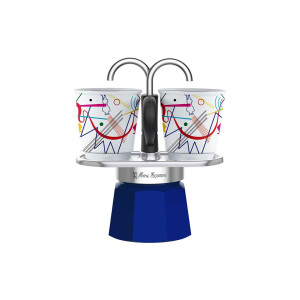 4.0Rated 4.00 out of 5(1)
4.0Rated 4.00 out of 5(1)Moka pot Bialetti Mini Express Arte Kandinsky
£39.92 -20%£49.90 -
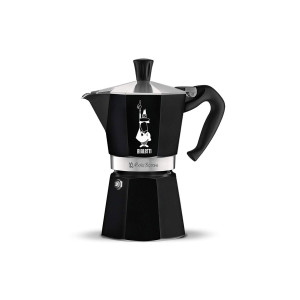 5.0Rated 5.00 out of 5(2)
5.0Rated 5.00 out of 5(2)Moka pot Bialetti Moka Express Black 6 cups
£34.32 -20%£42.90 -
 5.0Rated 5.00 out of 5(1)
5.0Rated 5.00 out of 5(1)Moka pot Bialetti Moka Induction Red 4 cups
£39.92 -20%£49.90 -
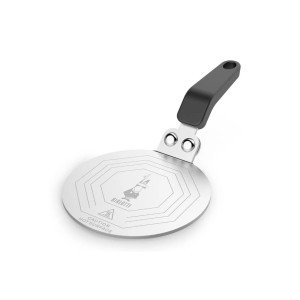
Induction plate Bialetti
£18.99 -13%£21.95 -
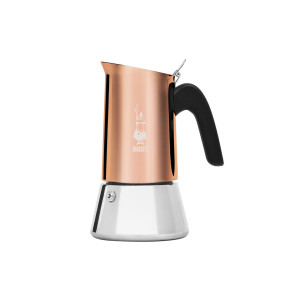
Moka pot Bialetti Venus Bronze 6 cups
-
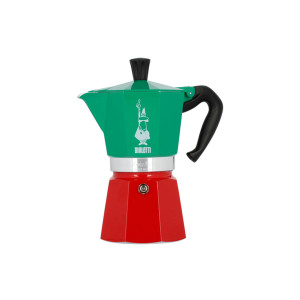
Moka pot Bialetti Moka Express Italia 6 cups
-
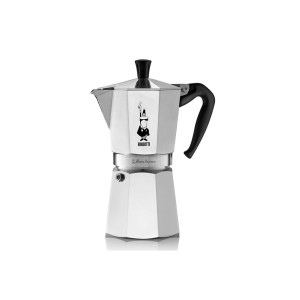
Moka pot Bialetti Moka Express 9-cup
-
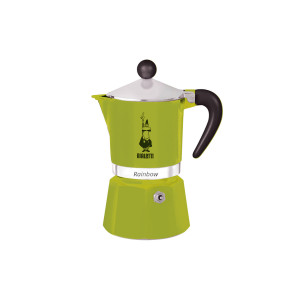
Moka pot Bialetti Moka Rainbow 3-cup Green
-
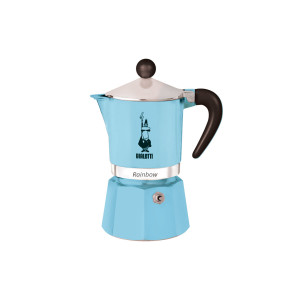
Moka pot Bialetti Moka Rainbow 3-cup Light Blue
The moka pot—also known as the Italian coffee maker or the espresso pot—is nowadays one of the trendiest brewing tools out there. It’s said that this iconic coffee maker can be found in 9 out of 10 Italian kitchens, and this tendency is quickly spreading all over the globe. What makes moka pots so strikingly popular is their stylish look, compactness, simplicity and, of course, the intense homemade coffee that they produce.
The moka coffee maker is made up of three distinct sections: there’s the bottom chamber for holding water; the metal filter in the middle for ground coffee; and the upper chamber where the prepared beverage collects. It’s all quite simple, really: all you have to do is fill the bottom chamber with water, pour ground coffee into the metal basket, put the pot on the stove and then wait for the boiling water to soak through the coffee and reach the upper chamber. An exquisite cup of coffee is just a few minutes away!
A Short History of Moka Pots
The story of this legendary coffee maker began all the way back in 1933, in Italy, where an engineer named Alfonso Bialetti and an inventor, Luigi De Ponti, introduced this innovative domestic brewing tool as an alternative to professional espresso machines found in cafés. Domestic bean-to-cup coffee machines were nothing but a crazy dream back then, of course! While moka pots weren’t technically brewing espressos (this is because these pots can only generate pressure of a few bars instead of the 8–9 bars required for proper espresso), the sheer intensity of these beverages nevertheless made them similar to the classic recipe. That’s why the moka pot is still referred to as the “espresso coffee pot” at times: even nowadays, it’s an excellent alternative to pricier coffee machines.
The first moka pot ever was given the name of Bialetti Moka Express. Its modern version (which hasn’t changed that much, actually) can be found in our range of products too. It’s interesting to note that while many other companies have tried producing their own renditions of the classic coffee maker, none were as successful as Bialetti: the original manufacturer has been producing the best-known and most popular moka pots for decades now. We’re proud to have a bunch of these pots in our selection!
The Best Moka Pot for You: How to Choose the Right One?
At first glance, it may seem like, aside from their design, all moka pots are pretty much the same. This isn’t exactly true though. To find the pot that’s truly right for you, you may want to consider some of the criteria we’ve laid out for you below.
How much coffee do you tend to brew at once? Moka pot sizes vary. Before you settle on a certain moka pot, consider how much coffee you’re going to brew at once. Sizes are measured using the number of standard cups that can be brewed using the pot: you can choose from moka pots suited for 2, 3, 4, 6, 9, 10 or 12 cups. Keep in mind that the standard cups used for this measure hold around 40–50 ml each. This means that a 2-cup pot will let you brew 90 ml of coffee, or 2 servings of espresso; a 3-cup moka pot is suited for 130 ml of coffee, or 3 servings of espresso; a 4-cup pot is good for 190 ml of coffee (4 servings of espresso); a 6-cup pot will hold 270 ml, or 6 servings of espresso; a 9-cup coffee maker brews 420 ml, or 9 servings; a 10-cup pot is suited for 460 ml (10 servings); and, finally, the largest available 12-cup moka pot boasts a capacity of 600 ml, or 12 standard servings. You might think it’s a good idea to purchase a larger pot—you don’t have to fill it up all the way, right?.. Well, not exactly. The size of the ground coffee basket depends on the overall size of the pot, and to brew your coffee properly, you must fill this basket up completely. Your best bet is, in fact, choosing the size that matches the number of servings you usually brew at once.
Traditional moka pot, induction pot or an electric pot? When choosing a moka pot, pay close attention to its type as well. Traditional pots are made of aluminium, so they’re not suited for induction plates. If that’s what you have at home, pick an induction pot instead. Unlike their traditional counterparts, induction moka pots are molded from stainless steel. Keep in mind though that the shape and design of induction models differ from those of traditional pots, so sworn fans of classic coffee makers can also go for a traditional aluminium moka pot and then couple it with an induction plate adapter. If you want to be free from any kind of stove, give an electric moka pot a try. It’s equipped with a convenient LCD display, so you can keep your coffee hot for up to 30 minutes after it’s been brewed or take advantage of other additional features.
Traditional or improved valve? The valve of the Bialetti Brikka model differs from those found in other pots. Thanks to its improved qualities, this valve creates additional pressure, so the resulting brew is thicker and covered by a stiffer layer of crema. Some moka coffee fans believe that crema like this is more fragrant and marked by flavour that’s even more intense than usual. However, others disagree and stay loyal to traditional pots with a regular valve, which produces more delicate tastes.
Classic design or contemporary style? The signature shape of the classic moka pot is now recognised all over the world. This is the design boasted by the Bialetti Moka Express line: octagonal bottom and upper chambers, a black knob and a curved black handle. Traditionally, these pots are silver-coloured, but there are black and red ones available as well. To pay homage to the country of Italy, a beautiful model adorned with the colours of the Italian flag was released too: it’s called Bialetti Moka Express Italia. Other lines are marked by different shapes, knob and handle designs, as well as additional inscriptions. If you’re looking for something different, take a look at Fiametta, Rainbow or Lovers. Those on the search for an induction pot can explore the Venus, Musa and Induction models. The exceptional Mini Express deserves a separate mention. Instead of collecting in the upper chamber, coffee is poured straight into two handy cups by this beautiful model. If you’re someone who values the beauty of brewing rituals, this one’s for you!
Take advantage of exclusive moka pot offers! In addition to a dazzling variety of coffee pots, Coffee Friend also offers some exclusive deals. To see if there are any discounted moka pots on offer at the moment, click here.
The most popular and best rated espresso pots. If you’re still struggling to choose, go ahead and put your trust in our community of coffee lovers: use the sorting feature to see which moka pots are currently the most popular or best rated.
What Should You Purchase Alongside Your Moka Pot?
To produce a truly exquisite cup of coffee, you’ll need more than just a moka pot. While some of these extras are absolutely necessary (like the coffee itself, for example), others are here to make your brewing ritual even more exceptional. Let’s take a closer look.
A yummy brew starts from… Well, coffee itself, of course! For the finest results, make sure to always use freshly ground coffee beans. When making drinks in a moka pot, your best bet is choosing coffee of a medium or medium dark roast. Also, while moka pots have been traditionally paired with coffee blends, more and more people are now going for single-origin coffees instead (that’s what we suggest doing too!). If you prefer pre-ground coffee, take a look at the Bialetti ground coffee line, which has been created and ground with this brewing tool in mind.
Coffee grinder. Those who decide to stick to coffee beans will definitely need a grinder. First, decide whether you’d prefer a manual or an electric grinder. For more advice on how to choose the right grinder, head over here. Once you’ve picked and purchased the one for you, choose a medium or coarser grind for your moka brews.
Frother for fans of milk-based drinks. We’ve already mentioned that coffee brewed in a moka pot is very similar to espresso, and this means that it goes well with milk. If you’re a fan of milk-based coffees, you may want to try and prepare some milk foam yourself. This is where milk frothers come in. To find out more about the subtleties involved in producing the perfect foam, read our blog post here.
Make your coffee even more delicious. A beautiful cup will make your coffee even yummier! Coffee Friend’s range of products includes numerous cups from some of the world’s best-known manufacturers. Depending on your favourite recipe, you may want to take a look at espresso cups, black coffee cups, cappuccino cups or latte cups.
Induction plate adapter. Again, if you own an induction plate, yet you’ve already fallen for the classic aluminium moka pot, don’t forget to purchase an adapter too.
Don’t forget about gaskets and a filter plate! If you want your moka pot to keep on serving you with delicious coffee for years to come, you’ll have to change its filter plate and gaskets from time to time. Keep in mind that these spare parts differ depending on the material your pot is made of, as well as its size. Our range includes separate sets for 3-cup, 4-cup, 6-cup and 12-cup aluminium moka pots, 3-cup and 6-cup induction pots, as well as 4-cup stainless-steel pots.
Now all you have to do is go ahead and brew some delicious coffee! To learn more about ways to do it, read our blog post How to Brew Delicious Coffee in a Moka Pot?. It’ll present you with some interesting historical facts, a brewing guide, advice for those who love to experiment, a couple of videos and even a few delicious recipes. If you’re interested in learning more about other brewing methods and tools, head over here.
To Conclude…
We hope you’ve already settled on your future moka pot! If you still have some doubts or questions though, no worries: simply reach out to Coffee Friend’s consultants and they’ll gladly help you out.
